Save those Precious Onion Skins!
Do you use a lot of onions in your cold-weather cooking? If so, you might be interested in this fascinating information from the OLD FARMER’S ALMANAC. It’s all about uses for all those onion skins (aka scales) that typically end up in either the trash or the compost bin. The bottom line? Save them…they’re precious!
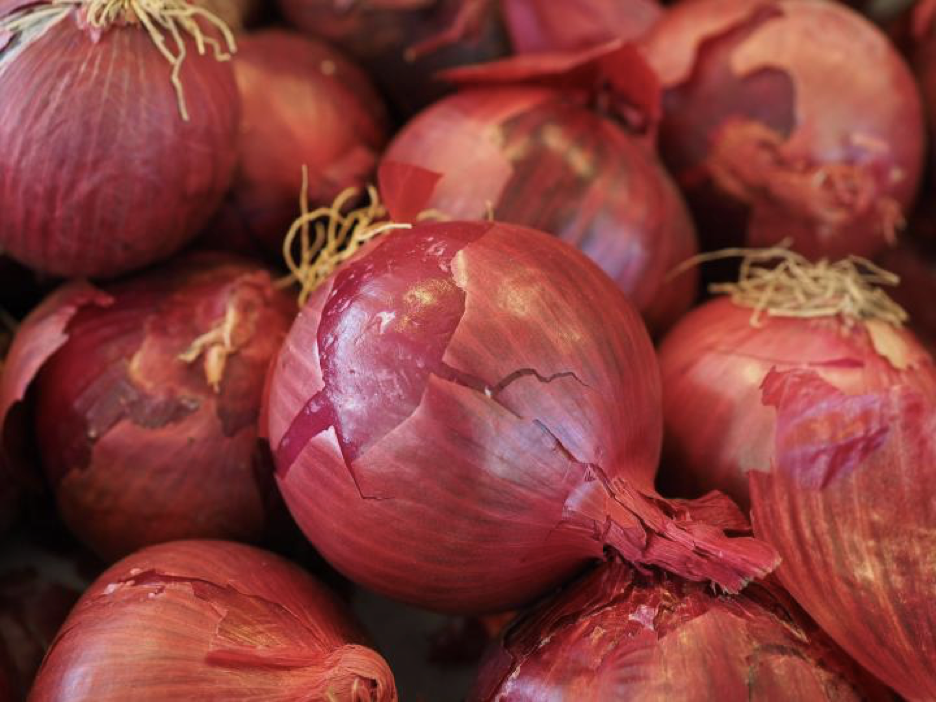
Turns out, recent research shows that onion skins provide an exceptionally rich source of plant compounds called flavonoids, especially the powerful antioxidant and anti-inflammatory compound, quercetin.
Scientists are finding quercetin is effective in lowering LDL cholesterol and blood pressure, fighting allergies, reducing inflammation, enhancing muscle growth and function, treating depression, some forms of cancer, and other conditions.
“Plants are the master chemists,” says Mary Ann Lila, director of the Plants for Human Health Institute at North Carolina State University. “Because plants can’t move around, they have to manufacture what they need, not merely to grow, but to defend, protect, and heal themselves. It makes sense that the compounds plants produce in response to stress would help a human under similar circumstances.” It also makes sense that plants would concentrate many of these protective compounds in the outer coverings–skins and peels of various roots and fruits–the point where most environmental assaults would likely occur.
So, we may as well put this natural health advantage to our own use, right? To do so, just toss an entire onion or two (skins and all) into the pot when you make soup/stew, cook rice, or cook a pot roast. Before serving, you’d remove the skins, and slice or dice the cooked onion and return it to the pot.
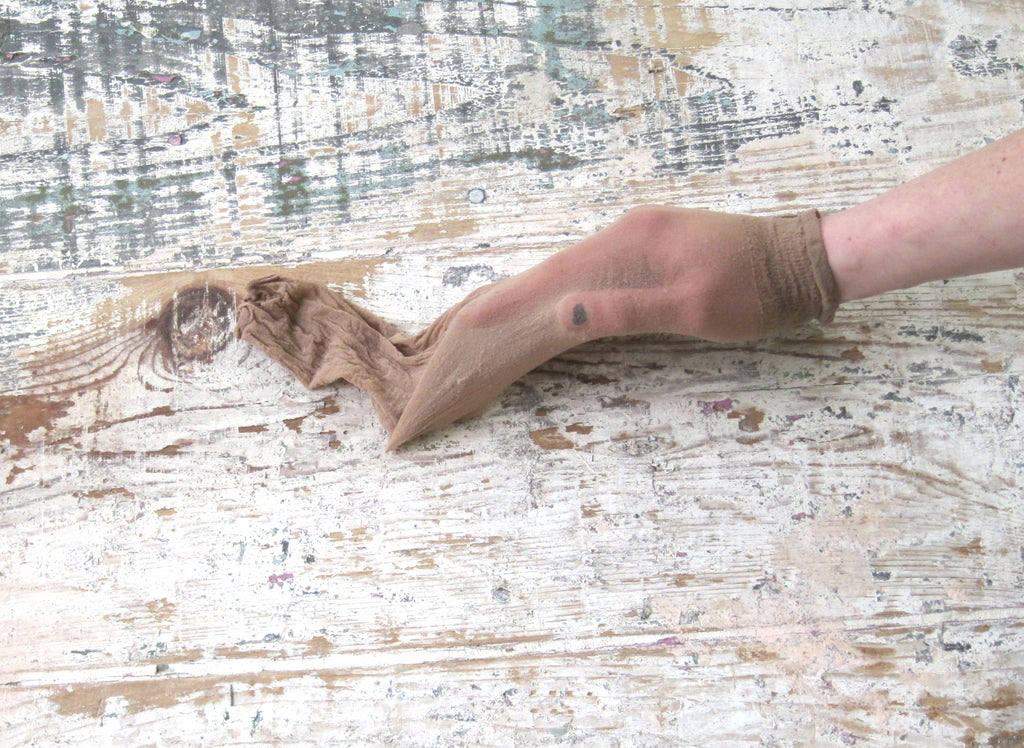
You could also save the skins in a paper bag. When ready to use, loosely fill the cut-off leg of an old pantyhose or nylon knee high with a handful of onion skins. Discard the skins after the soup has simmered or the rice has cooked, then wash and save the nylon “bag” for another use.
A nice side benefit: onion skins will impart a rich brown or deep mahogany color to your broth, depending on which color onion you use.
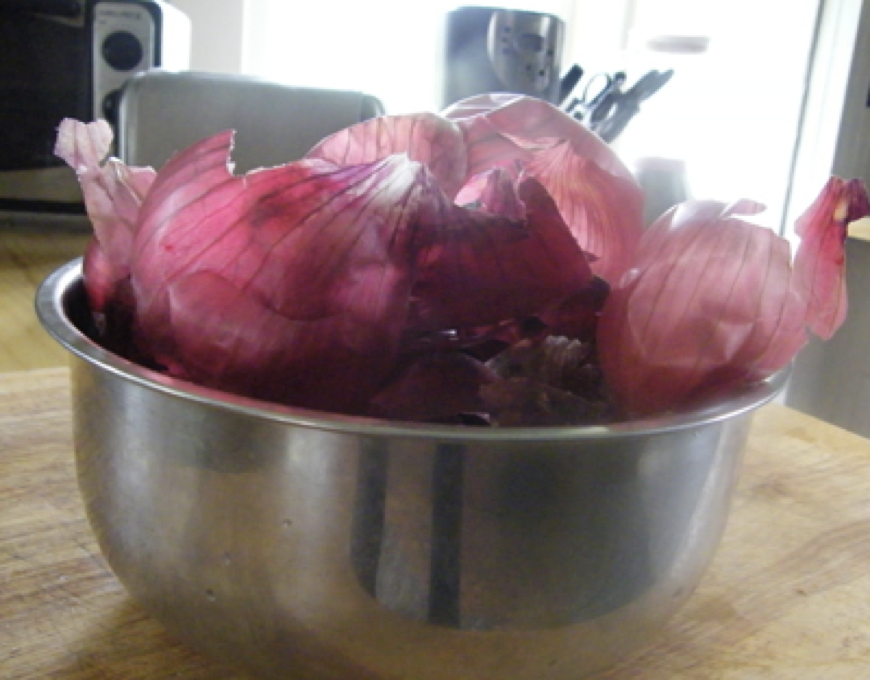
But there are other uses for onion skin. For instance, noted ethnobotanist, James Duke (who worked for the USDA's Agricultural Research Service for almost 30 years), recommends an infusion of onion skins as a soothing wash for skin rashes and other skin ailments.
Also, an onion-skin infusion has a long reputation as a softening and smoothing hair rinse. Just run the strained onion-skin broth through freshly washed hair a few times and let it air dry. (Researchers say there’s no residual onion odor and the results are wonderful.)

Then there’s onion skin tea—a soothing immune booster. Pour hot water in a cup containing a green tea bag and onion skins; let both steep for 10 to15 minutes. Remove the bag and skins and relax with a healthful cup of tea.
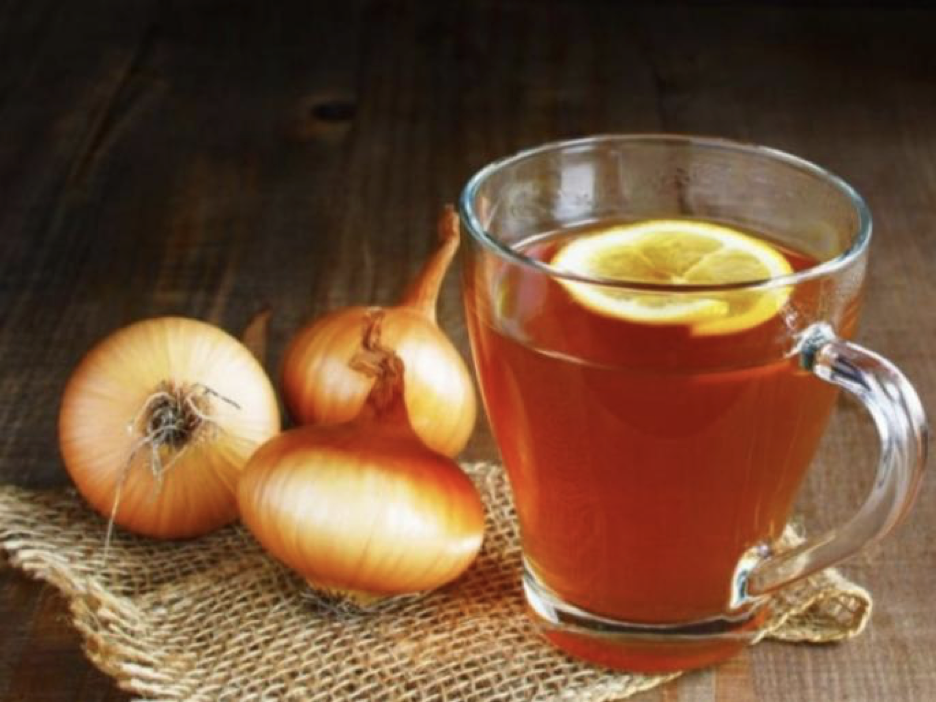
And lastly, fiber artists all know that onion skins make gorgeous dyestuffs for natural fibers. Whether cotton, linen, or wool, onion skins can work color magic. Just look at what yellow and red onion skins did to these skeins of wool:
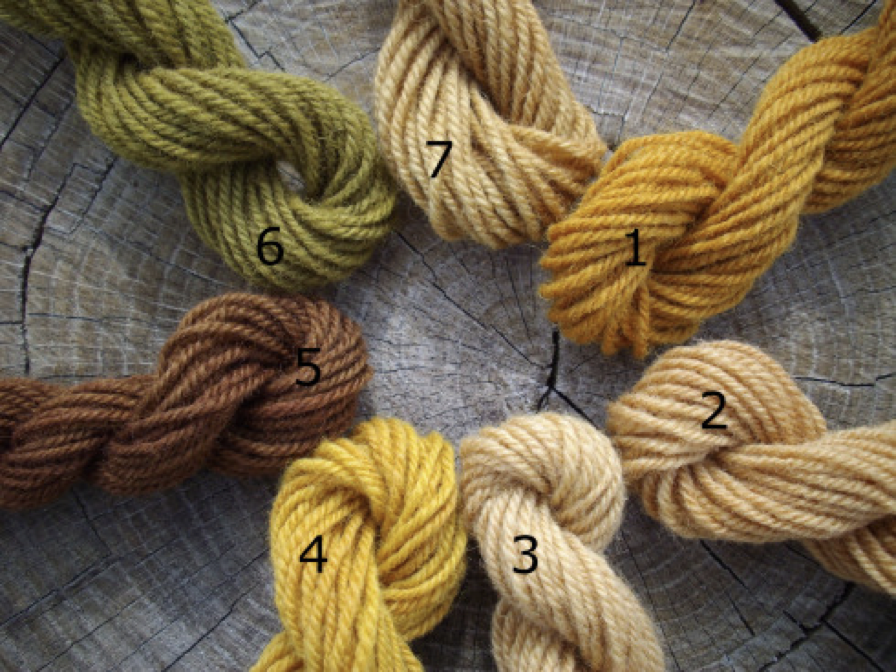
1) Yellow onion skins on alum mordanted wool, 2) yellow onion skins on heuchera mordanted wool, 3) yellow onion skins and garlic skins on non-mordanted wool, 4) yellow onion skins and garlic skins on alum mordanted wool, 5) red onion skins on non-mordanted wool, 6) red onion skins on alum mordanted wool, and 7) red onion skins on heuchera mordanted wool. (NOTE: “Mordanting” is what you do to a fiber to help it accept dye. Mordanting influences the intensity of color.)

Turns out, recent research shows that onion skins provide an exceptionally rich source of plant compounds called flavonoids, especially the powerful antioxidant and anti-inflammatory compound, quercetin.
Scientists are finding quercetin is effective in lowering LDL cholesterol and blood pressure, fighting allergies, reducing inflammation, enhancing muscle growth and function, treating depression, some forms of cancer, and other conditions.
“Plants are the master chemists,” says Mary Ann Lila, director of the Plants for Human Health Institute at North Carolina State University. “Because plants can’t move around, they have to manufacture what they need, not merely to grow, but to defend, protect, and heal themselves. It makes sense that the compounds plants produce in response to stress would help a human under similar circumstances.” It also makes sense that plants would concentrate many of these protective compounds in the outer coverings–skins and peels of various roots and fruits–the point where most environmental assaults would likely occur.
So, we may as well put this natural health advantage to our own use, right? To do so, just toss an entire onion or two (skins and all) into the pot when you make soup/stew, cook rice, or cook a pot roast. Before serving, you’d remove the skins, and slice or dice the cooked onion and return it to the pot.

You could also save the skins in a paper bag. When ready to use, loosely fill the cut-off leg of an old pantyhose or nylon knee high with a handful of onion skins. Discard the skins after the soup has simmered or the rice has cooked, then wash and save the nylon “bag” for another use.
A nice side benefit: onion skins will impart a rich brown or deep mahogany color to your broth, depending on which color onion you use.

But there are other uses for onion skin. For instance, noted ethnobotanist, James Duke (who worked for the USDA's Agricultural Research Service for almost 30 years), recommends an infusion of onion skins as a soothing wash for skin rashes and other skin ailments.
Also, an onion-skin infusion has a long reputation as a softening and smoothing hair rinse. Just run the strained onion-skin broth through freshly washed hair a few times and let it air dry. (Researchers say there’s no residual onion odor and the results are wonderful.)

Then there’s onion skin tea—a soothing immune booster. Pour hot water in a cup containing a green tea bag and onion skins; let both steep for 10 to15 minutes. Remove the bag and skins and relax with a healthful cup of tea.

And lastly, fiber artists all know that onion skins make gorgeous dyestuffs for natural fibers. Whether cotton, linen, or wool, onion skins can work color magic. Just look at what yellow and red onion skins did to these skeins of wool:

1) Yellow onion skins on alum mordanted wool, 2) yellow onion skins on heuchera mordanted wool, 3) yellow onion skins and garlic skins on non-mordanted wool, 4) yellow onion skins and garlic skins on alum mordanted wool, 5) red onion skins on non-mordanted wool, 6) red onion skins on alum mordanted wool, and 7) red onion skins on heuchera mordanted wool. (NOTE: “Mordanting” is what you do to a fiber to help it accept dye. Mordanting influences the intensity of color.)
Sources:
- www.almanac.com
- www.instructables.com
- www.koko.news.com
- www.lokmatnews.in
- www.waysofthewhorl.wordpress.com
 Alice Osborne
Alice Osborne
Weekly Newsletter Contributor since 2006
Email the author! alice@dvo.com
